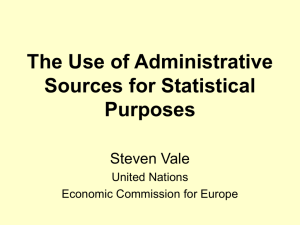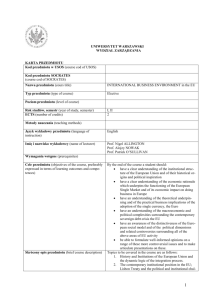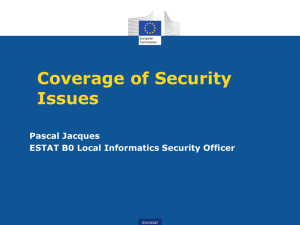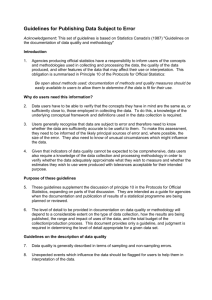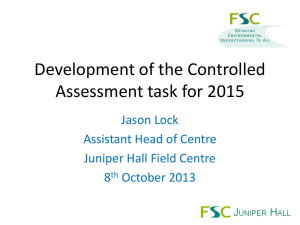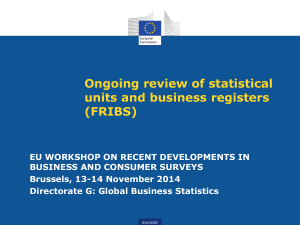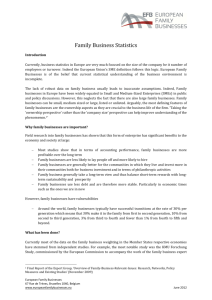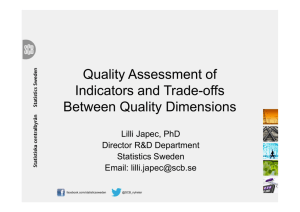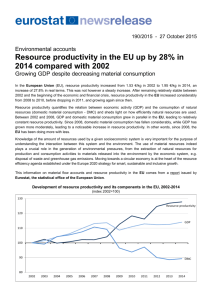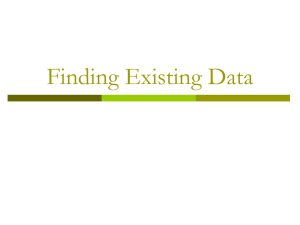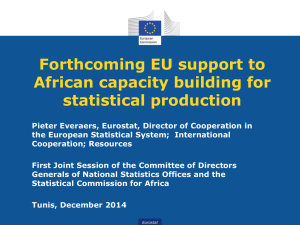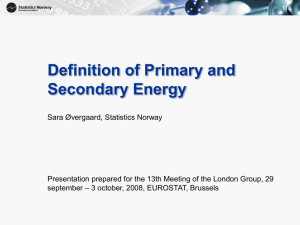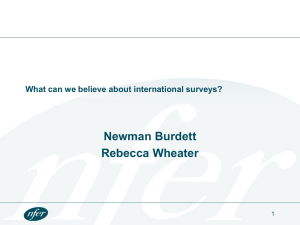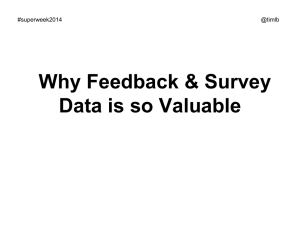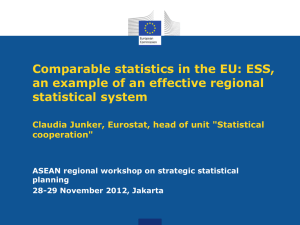big data
advertisement
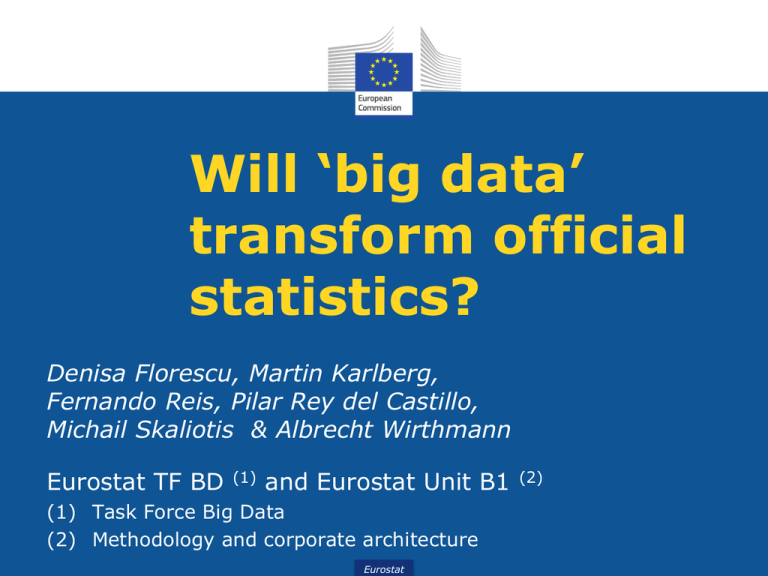
Will ‘big data’ transform official statistics? Denisa Florescu, Martin Karlberg, Fernando Reis, Pilar Rey del Castillo, Michail Skaliotis & Albrecht Wirthmann Eurostat TF BD (1) and Eurostat Unit B1 (1) Task Force Big Data (2) Methodology and corporate architecture Eurostat (2) Outline • Official Statistics: early stages of a paradigm shift • Potential ways to address methodological aspects • Quality assessment: possible accreditation procedure for Big Data sources 2 Eurostat A change of paradigm? • Different approach towards the production of statistics to accommodate big data • Recent initiatives from NSIs • Scheveningen Memorandum: commitment to collectively addressing challenges presented by big data 3 Main features of survey, administrative and big data SURVEY DATA ADMINISTRATIVE DATA BIG DATA Statistical products specified ex-ante Statistical products specified ex-post Statistical products specified ex-post Designed for statistical purposes Designed for other purposes Designed for other purposes Weaker comparability between countries Weakest inter-country comparability Potentially greater comparability Representativeness & coverage known by design Representativeness & coverage often known Representativeness & coverage difficult to assess Manageable volume Manageable volume Huge volume Persistent High burden 4 Possibly less persistent No incremental burden Less persistent No incremental burden Strategies for integrating big data sources in Official Statistics • Entirely replace existing statistical sources • Partially replace existing statistical sources • Provide complementary statistical information in the same domain • Improve estimates from statistical sources • Provide completely new statistical information in a particular domain 5 Could big data entirely replace traditional statistical surveys? • Big data sources do not yet provide an alternative for all the list of variables currently collected through surveys in the ESS • Conclusion reached e.g. assessing ICT surveys (Karlberg & Skaliotis, 2013) • Potential to replace some statistical outputs entirely in the long-term if: – The statistical outputs from BD meet the need for particular information – Other unbiased sources can be used for benchmarking (adjusting possible BD bias) 6 Provide partial replacement or complementary statistical information • Potential to 'partially' replace some statistical outputs (keeping the definitions or redefining) • Provide complementary information (e.g. build indicators of trends for structural surveys) • Integrate BD into surveys: record linkage and statistical matching can be used 7 Improve statistics produced from surveys • By addressing its inherent weaknesses: e.g. flash estimates from BD to improve timeliness • To calibrate survey results against the totals and breakdowns available from BD • For small area estimation: they often cover exhaustively their own populations • Combining surveys with BD sources will eventually lead to greater use of statistical modelling within NSIs: significant change in culture & practices 8 Some BD experiences complementing or improving surveys data • ONS in the UK: analysis of internet search queries within migration statistics • CSO in Ireland: electricity smart meter data to determine household composition • Telefonica (Spain): mobile phone records for forecasting socio-economic trends and levels • Study by Eurostat: mobile positioning data for Tourism statistics • Zagheni [15]: estimates of global migration trends by analysing 43 mill. Yahoo IP addresses 9 Strategies to produce completely new statistical information • Previous approaches are rooted in traditional statistical models and tools • Why not design a new system aiming at maximising efficiency in using BD? – To improve timeliness – Not subject to restrictions of traditional statistical surveys: e.g. to integrate BD implies tasks such as translating & linking to definitions, classifications… 10 Strategies to produce completely new statistical information (cont'd) • But new procedures cannot be designed overnight • Possible approach: start producing short-term indicators of evolution of economic & social phenomena without transposing BD structures onto statistical ones – To complement classical & more detailed statistics – To help official statisticians to learn by doing • Also reconsider the role of some present statistical infrastructures that are resource heavy or time consuming 11 Quality assessment • Quality framework developed for official statistics refer largely to measures of accuracy of samples • How to extend framework to cover BD sources? • Study commissioned by Eurostat (2013) drawing upon the approaches used for administrative data – Proposes an accreditation procedure which could guide statistical authorities in the selection of BD sources conforming with high standards of OS – Official statistical system has moral authority to think on a possible certification as data producer in a particular statistical domain 12 Conclusions • BD as an alternative source with VALUE for Official Statistics • OS to remain open minded not to miss out on opportunities or to be rendered obsolete • Any new BD source with the potential to increase efficiency should be considered (No sources are “too big” or “too small”) • Big changes to practices & way of working; different responsibilities & functions • Transformation has already started 13 Thanks for your attention !! 14 Eurostat
